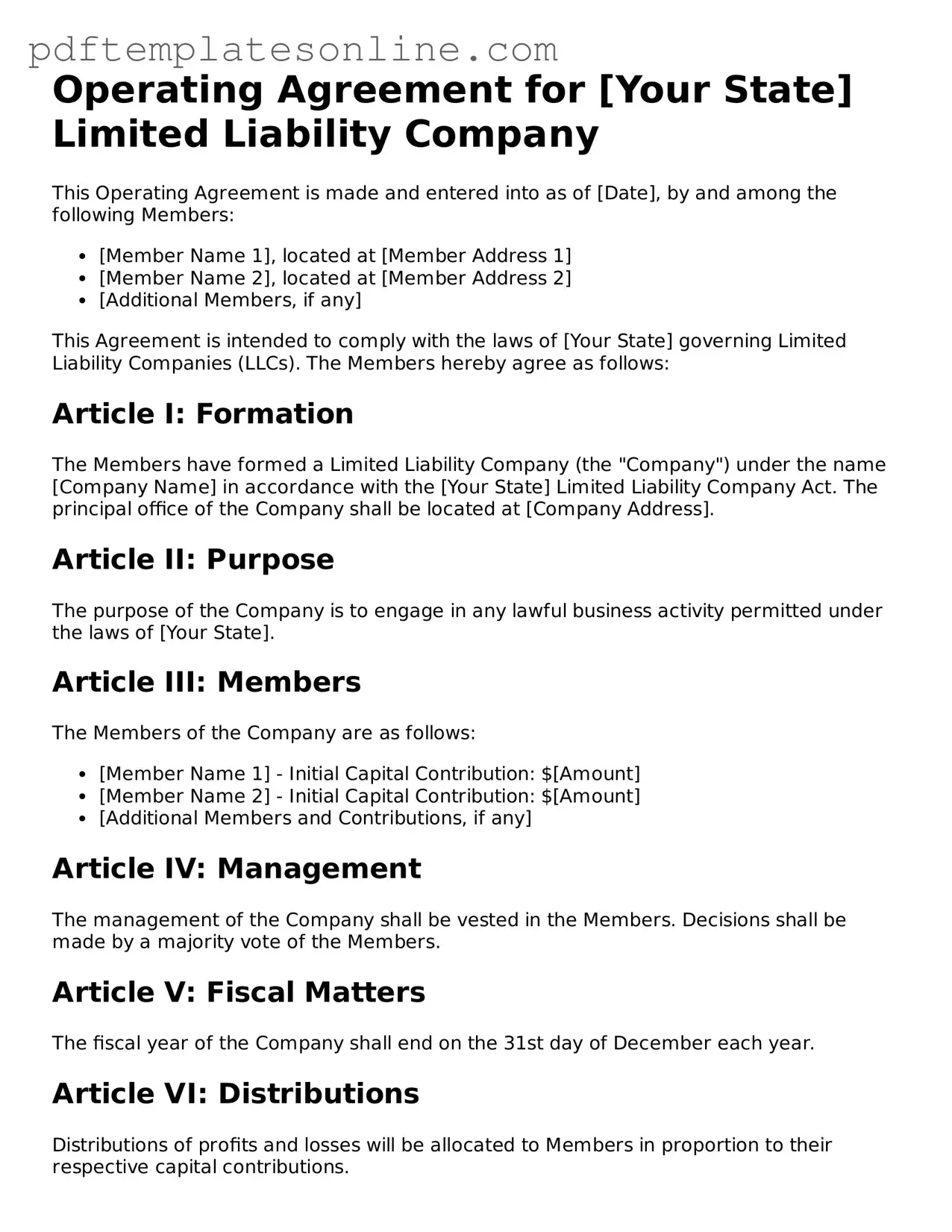When filling out an Operating Agreement form, individuals often encounter several common mistakes that can lead to complications down the line. One prevalent error is the failure to clearly define the roles and responsibilities of each member. Without explicit descriptions, misunderstandings may arise regarding who is responsible for specific tasks, which can create friction among members.
Another frequent oversight involves neglecting to specify the percentage of ownership each member holds. This detail is crucial, as it determines profit distribution and voting power. If ownership percentages are left ambiguous or omitted entirely, it can lead to disputes and confusion about decision-making authority.
Additionally, many people forget to include provisions for resolving disputes. An Operating Agreement should outline the steps members will take to address conflicts. Without this framework, disagreements can escalate, potentially jeopardizing the stability of the business.
Moreover, individuals often overlook the importance of updating the Operating Agreement as the business evolves. Changes in membership, ownership, or operational structure should prompt a review and revision of the agreement. Failing to do so can result in outdated information that no longer reflects the current state of the business.
Lastly, some individuals may not fully understand the legal implications of the Operating Agreement. This document serves as a binding contract among members, and failing to take it seriously can lead to unintended consequences. It is essential to approach the completion of this form with care and consideration to ensure that all members are protected and that the business operates smoothly.
